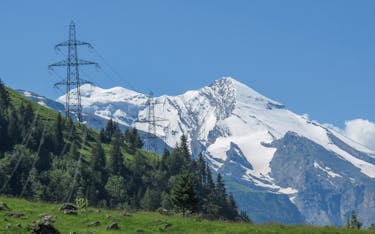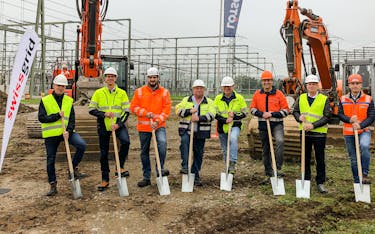Project Advisory Council meeting held on 25 January 2024
The first meeting of the Project Advisory Council took place in Niederwil on Thursday, 25 January 2024. After a brief introduction and discussion of organisational points regarding the tasks of the Project Advisory Council, Matthias Schmid, Head of Project Lines / Substations at Swissgrid, explained the project development to date. Project Manager Luis Mata then informed the members about the current planning status of the Niederwil – Obfelden grid project. He explained the procedure for developing the approximate route and showed examples of the various transmission technologies. You can find the full presentation of the meeting in the download area below.
Project Advisory Council meeting held on 26 June 2024
The second meeting of the Project Advisory Council took place in Niederwil on Wednesday, 26 June 2024. Project Manager Luis Mata informed the members about the current planning status of the Niederwil – Obfelden grid project and summarised what had been developed since the last Project Advisory Council meeting as part of the construction project. The main focus of the meeting was on the environmental impact assessment (EIA), which was explained by Simon Bohnenblust from Prona AG (spatial/environmental planner), as well as on the input from the authorities, cantons and municipalities in the preliminary EIA study and within the framework of the Project Advisory Council. The feedback and comments reveal a fundamental conflict of objectives in the routing of the line, which was discussed by the Project Advisory Council. Swissgrid is now analysing the feedback in greater depth and, where possible, incorporating it into the development of the construction project. The full presentation of the meeting can be found in the download area below.
Project Advisory Council meeting on 23 October 2024
The third meeting of the Project Advisory Council took place in Niederwil on Wednesday, 23 October 2024. Project Manager Luis Mata gave an update on the current planning status of the construction project. He also informed the members about the current schedule and the next milestones. The planning approval process is expected to start in mid-2025, at which point the project will go on public display. In dealing with the conflicting objectives highlighted at the last meeting (municipalities: greater distances to settlements; canton: fewer forest locations), Swissgrid is focussing on a specific weighing of interests for each pylon location. This focussed on the Niederwil and Hermetschwil-Staffeln areas. The concerns of the municipalities, cantons and landowners are incorporated into the detailed routing and planning, the latter particularly in the small-scale optimisation of the pylon sites. In addition to the Niederwil – Obfelden project, Swissgrid also provided an insight into a national topic at this Project Advisory Council meeting: Andrea Mäder, Head of Public Affairs, gave a short presentation on the so-called «Grid express» (consultation on the amendment of the Electricity Act) and explained Swissgrid's position. You can find the full presentation of the meeting in the download area below.
Project Advisory Council Meeting on 11 June 2025
On Wednesday, 11 June 2025, the fourth and final meeting of the Project Advisory Council took place in Niederwil. Project planner Christian Albanbauer (Axpo) reviewed the work completed since the last meeting in October 2024 together with the members and provided an update on the current project status. A key topic was the upcoming submission of the planning approval dossier, which is scheduled to take place in the coming weeks. Project manager Luis Mata outlined the key aspects of the procedure, time dependencies, and the contents of the project documents that will be made publicly available as part of the planning approval process. Simon Bohnenblust (environmental consultant, Prona) provided information on the field surveys for ecological assessment and the planned compensatory measures. Swissgrid asked the municipalities to already submit concrete project ideas for potential ecological compensation measures. Communications officer Sandra Bläuer explained the communication measures Swissgrid is planning in advance and how the public will be informed about the information events prior to the public participation phase. To conclude, the Project Advisory Board reflected on the collaboration. Swissgrid thanks the members for their committed participation and the valuable input that contributed to the development of the project. The full presentation from the meeting can be found below in the download section.














